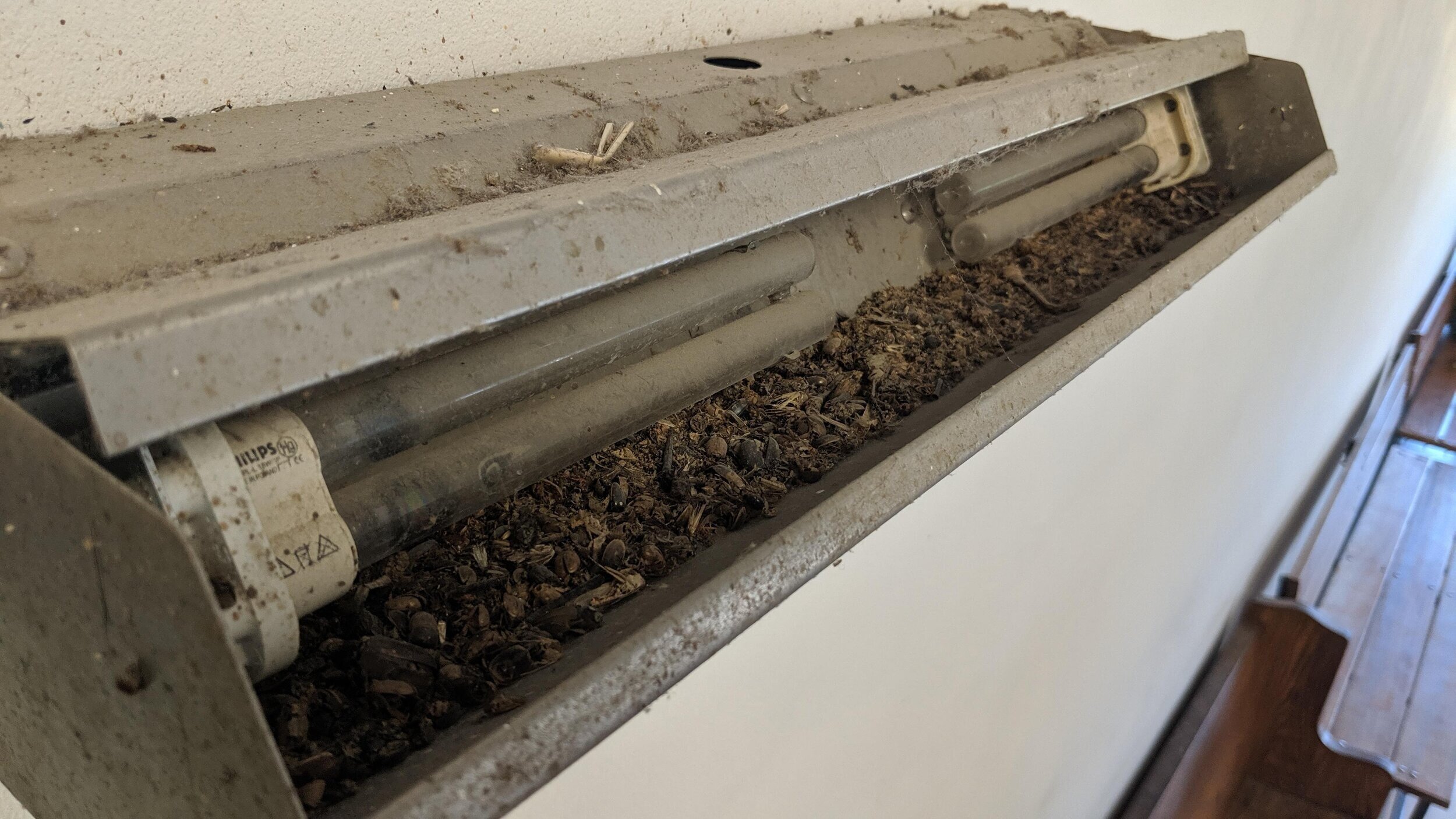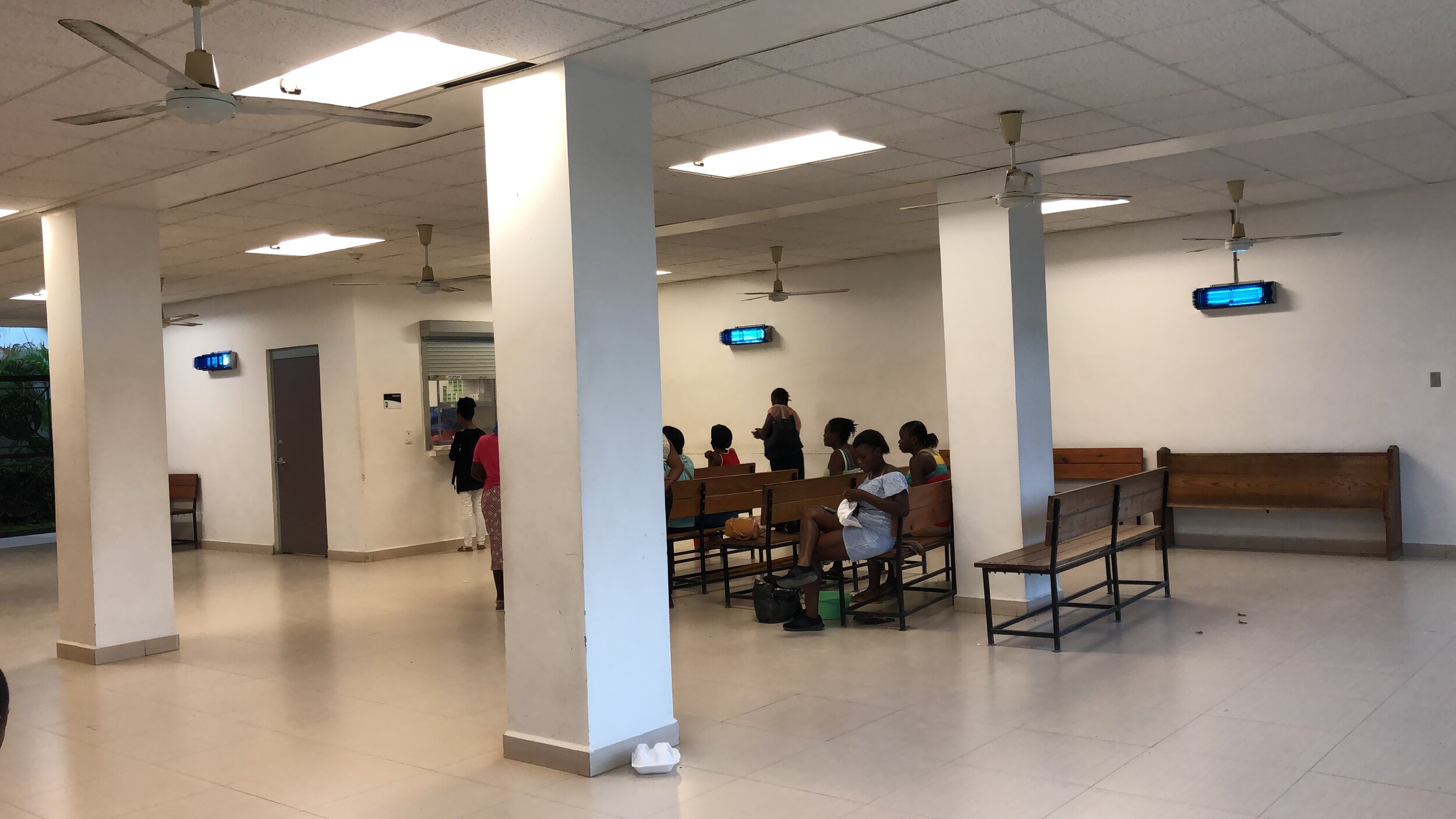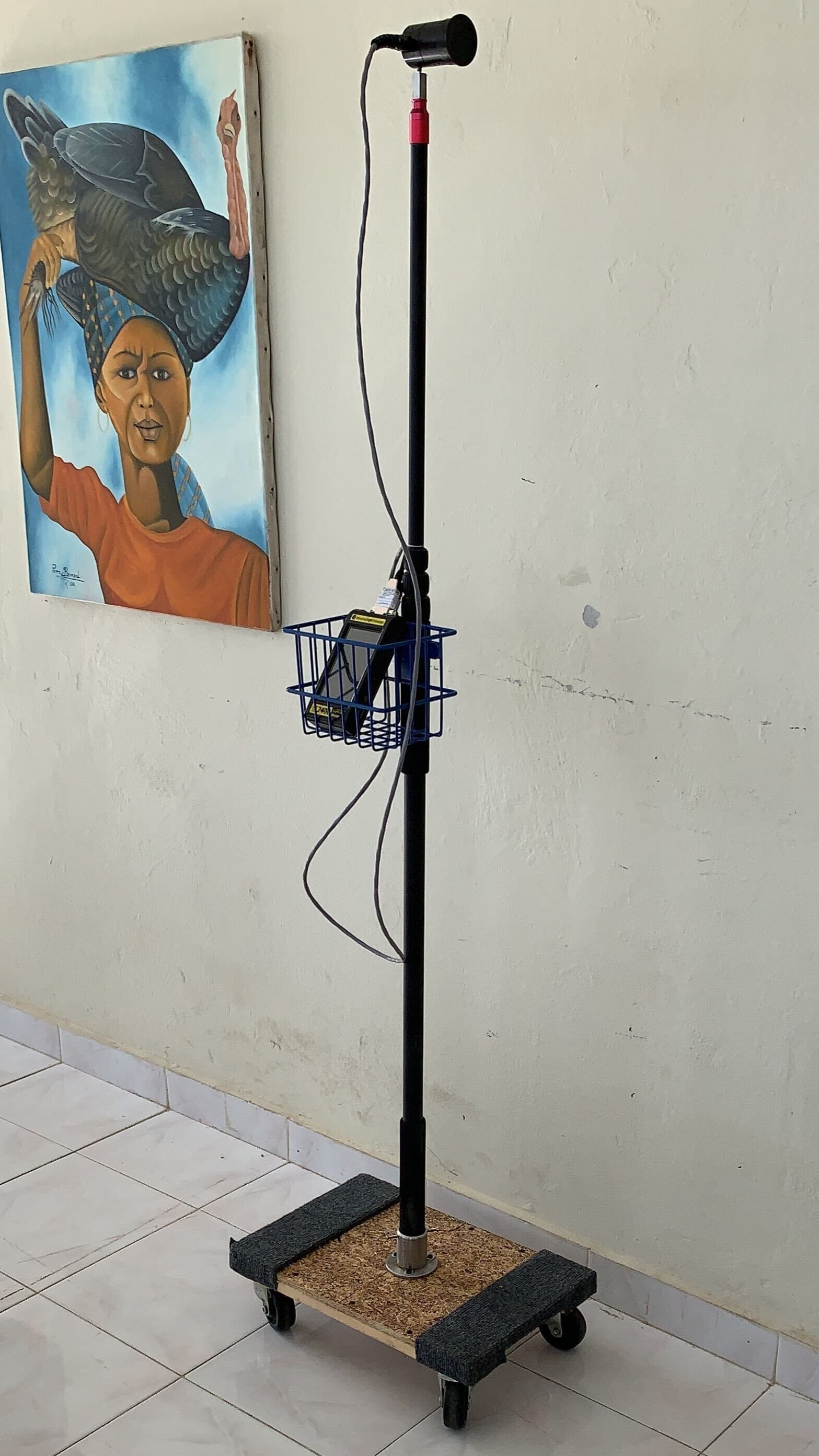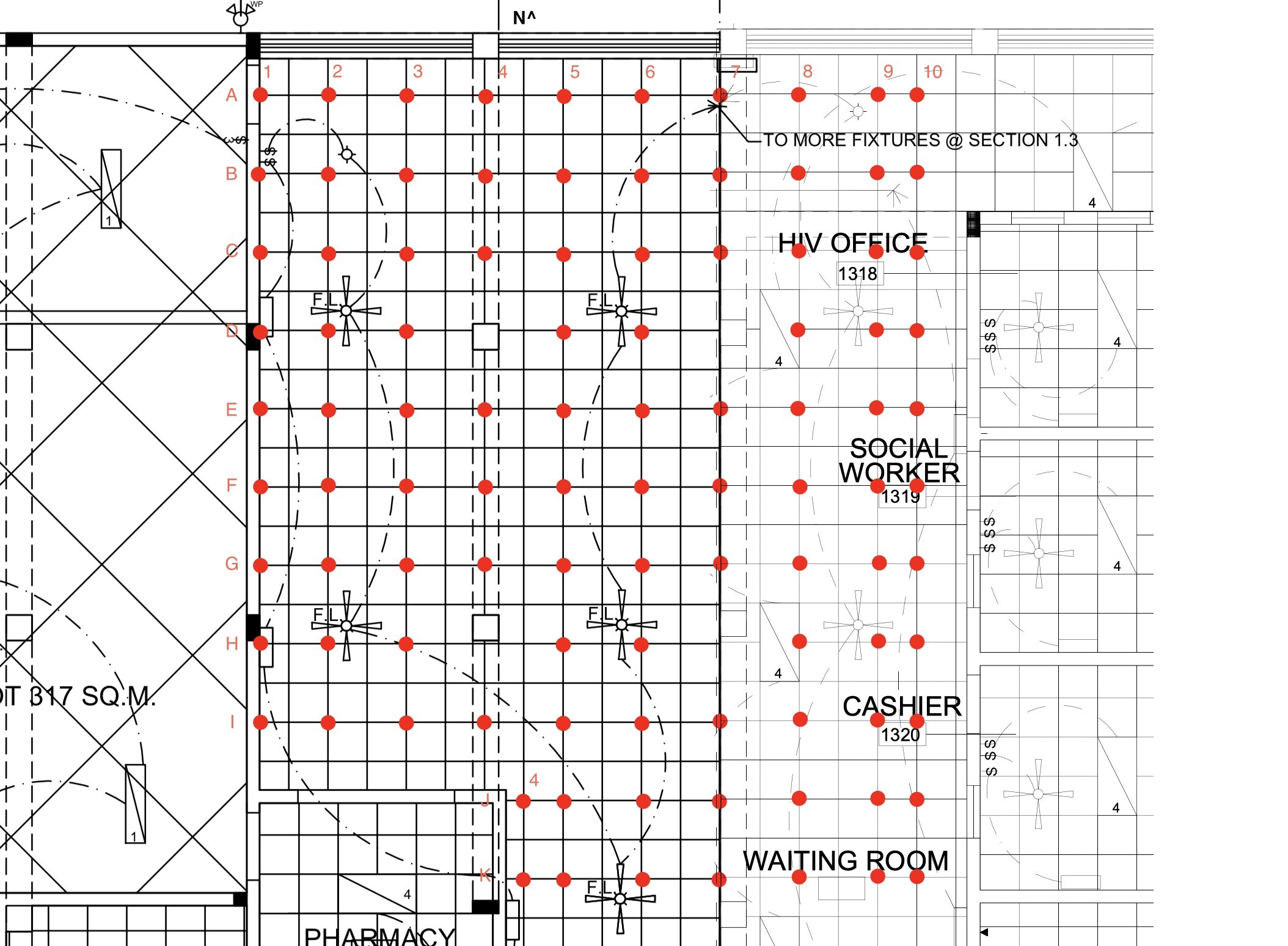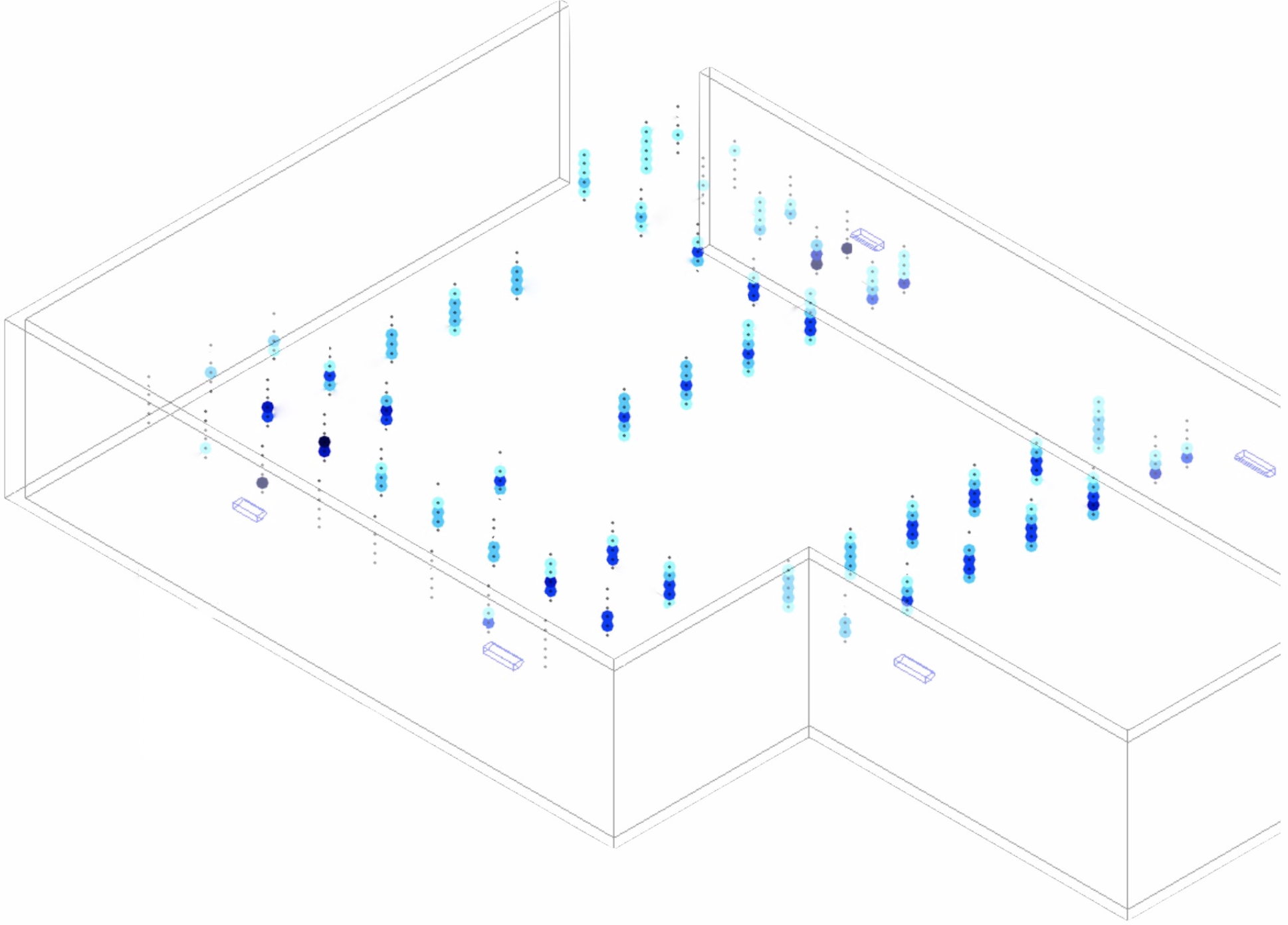Improving upper-room GUV
Challenge: GUV fixtures direct concentrated UV rays to the upper parts of a room to disinfect airborne pathogens while keeping the occupants in the lower parts of the room safe.
This is an effective means to reducing TB transmission but there are no existing studies evaluating GUV effectiveness in low-resource settings where there are unique challenges around cost, maintenance and education.
Solution: BHI seeks to test and report on the GUV fixtures installed in their Haitian facilities, to provide field data on their use and cost effectiveness. We hope this data will inform future fixture design, maintenance guidelines and the conversation around environmental controls to stem the spread of TB.
Logistics: One year in, first phase of testing in Haiti complete. Worked in team of 4.
My Role: Co-lead on this project; planned first phase of testing to evaluate safety levels, maintenance and UV coverage of two types of fixture designs; developed improved testing rig for use in Haiti, wrote Matlab code to visually analyze data from field; developed and maintained key partnerships with manufacture (AeroMed) and educational institution (Thayer School of Engineering) to fund and support work moving forward.
Lessons learned: Always make contingency plans, research on the field doesn’t always go as expected; importance of good communication when working with external partners; clearly outlining goals, assumptions and limitations of any study
Interactive Matlab plot for viewing data points around the room
Upper-room GUV Fixture



